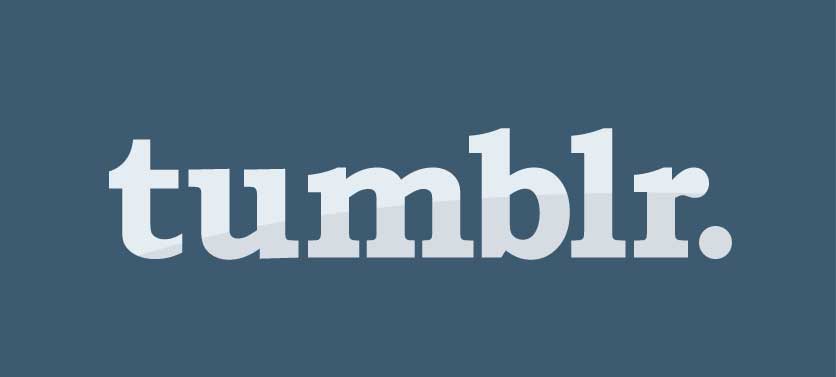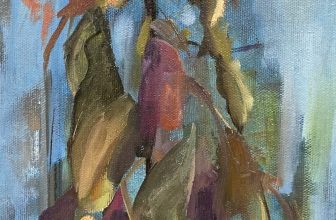
5. Be bold and contact bloggers
Tumblr is a great place to experiment and collaborate with creative professionals. Well, don’t go like “me me me, share my post”. Instead of begging, send a short pitch: what their audience gets and what you’ll deliver. Propose a collaboration (process write-up, Q&A, joint challenge, limited print for a giveaway). If you send samples or gifts, say so and don’t demand coverage.
6. Ignore the vanity metrics
Do not worry too much about the followers. A reblog from a good art blog will reach theirs. And Likes are just bookmarking. So share your passion and expertise, and you will find your followers soon enough. Focus on a consistent style, clear tags, and real conversations.
7. Pin an introductory post
Take Advantage of the “Pinned” Post: Tumblr lets you pin a post to the top of your blog. A pinned post acts like a quick intro. You can make a neat pinned post that says, for example: “Hi, I’m ____ and I make [type of art]. Commission Info here, Print Shop here, follow me on Instagram,” etc.
Because you don’t want to put links on every art post, the pinned post is where you should put those essential links. It’s essentially your blog’s homepage for anyone who clicks on your username.
10. Use Tumblr Communities
Tumblr launched Communities in 2024, which are groups built around shared interests. You can join or start one for digital art, illustration, or a fandom. Each community has its own moderators, similar to a subreddit. The idea here is to cross-post: Post your art to the community, then add public tags for reach. Then reblog to your main blog.
11. Post vertical images
Always start your post with one strong, vertical image. It claims more space on the dashboard and sets the hook. If your work is horizontal, pair two or three images in a row and build a tall collage. Multi-image posts usually collapse after one row, so signal there’s more by grouping images on the second row.
12. Work on your identity, not random selfies
Post personal photos only when they add context: you in the studio, tools on the table, the piece with your cat for scale. Keep your intention in mind: identity, credibility, or work progress log, and post toward it.
13. Add links to posts only if necessary
Link-stuffing feels handy, but it quietly hurts you. Posts with links often “won’t appear in search results or tags”, so fewer people will discover your work. So post your art clean: No links, no noise. Let viewers enjoy it without a sales pitch. When you need a call-to-action (Kickstarter launch, print drop, charity drive…), keep it for the pinned post.
14. Tag smart and with style
On Tumblr, in contrary to Instagram, Tags drive discovery. You can add up to 30; search on your blog is limited to 20. But Tumblr users don’t appreciate tag spam; around 5 tags is broadly enough. Lead with broad tags (#art, #artists on Tumblr), then medium and subject (#illustration, #digital art, #portrait), then niche, fandom, or status tags (#dark art, #league of legends, #commissions open) where relevant.
15. Communicate with Tags
You can write a message using the tags. It shows that you don’t care about the engagement but more about the depth of the post. And it’s pretty elegant. Tumblr users often write their thoughts in tags instead of using replies. You shouldn’t ignore this old habit: people will comment on your art there. It’s a great way to see honest reactions and support.
16. Use a custom domain
You can buy a domain from any provider and point it to your Tumblr. Tumblr also provides the domain name as a service, but it is more expensive. A custom domain gives you stable permalinks, stronger branding, and cleaner sharing. If you use a domain name, turn on HTTPS in the settings.
Claim your blog with Pinterest
Because both Pinterest and Tumblr are interest-driven, the synergy between the two is excellent. If you have a domain name, you can claim your blog on Pinterest for attribution and analytics.
Control the source URL
Each post has a “Content source” field. Set it to the original on your site. With a custom domain, your Tumblr permalinks already live on your URL; share those. Link back to the canonical page so viewers land on the original.
Example:
First, you copy the link of the post once published:
https://www.tumblr.com/DOMAINNAME/734054267746500608/after-work-digital-art
And then you edit the Post, and add the source:
https://DOMAINNAME.com/post/734054267746500608/after-work-digital-art
Reference your website
This tip is SEO related; ignore it if you don’t have a personal website. Use Tumblr for discovery, not backlinks. Like every social media, links from Tumblr are JavaScript redirects, so it doesn’t pass link value. If you have your own domain on Tumblr, the only link that is DoFollow is from your domain name or Blog homepage if you have a domain name for your Tumblr blog.
Add your blog to Webmaster Tools
Once you use your own Domain Name for your Tumblr, you can create a “sitemap.XML” and send it to Webmaster Tools. It will improve the referencing of the blog. Here is the way:
-
- Generate the sitemap using the website’s XML sitemap, for example.
- Download the generated XML file.
- Host it on your website domain.name/sitemap.xml
- Upload it to Google Webmaster Tools (Dashboard/crawls/sitemaps)
17. Keep posts clean and visually appealing.
If your post is neat, with a clear layout and a good-looking image or photoset, it’s more likely to get reblogged. Avoid long blocks of text and cluttered hashtags. Use high-quality images that highlight your art’s details. Group similar sketches into one photoset; don’t post them one by one. Unlike other platforms, Tumblr rewards quality over quantity, and a good post can resurface years later.
18. Submit your art
On Tumblr, you don’t need to focus on getting followers. It’s more important to be in contact with good art blogs. The number of followers isn’t shown anywhere and isn’t proof of value. Showing who has the biggest isn’t important.
Contact art blogs
Tumblr doesn’t have complex algorithms, so gaining attention takes time. However, many art blogs on Tumblr accept submissions or reblog art with credit. Focus on those that clearly state they are open to submissions. Before submitting your work, explore the type of content this blog shares and see if your art fits its style. Blog owners may reject submissions due to style mismatches, low image quality, or simply because of taste.
Here are some key submission-based art blogs to consider (with an example of the submitted art):
– Art on Tumblr – Tumblr HQ
Curated by Tumblr’s editorial team, this blog once functioned as a digital gallery for diverse media: illustration, photography, embroidery, and more. While it was more active in earlier years, it’s still worth submitting there.







